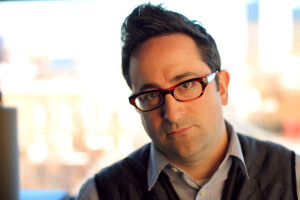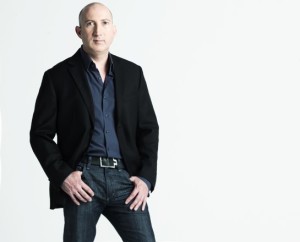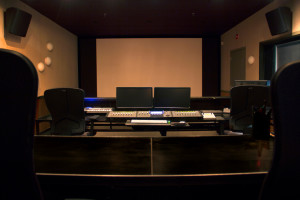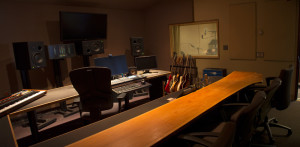Post Evolution: How NYC’s Dig It Audio Went All-In by Partnering Up
Specialization is a double-edged sword: You can build a reputation as one of the best in your niche, but that doesn’t mean that business will be an easy ride.
Tom Efinger, Partner and President of NYC’s Dig It Audio, was experiencing that sensation firsthand. His Dolby-certified 5.1 theater had been cranking since 2001, and he racked up a long list of film and TV mixing credits there including Inside Job, Happiness, Half Nelson, Station Agent, At Any Price, Soul Power, Europa Report, Universal Soldier Regeneration and Day of Reckoning, Z Nation Season 1, and Mississippi Grind.
While Efinger and his team were building a sterling audio post portfolio, however, their Hudson Square neighborhood downtown – straddling the border between SoHo and TriBeCa – was becoming a lot more valuable. In order to keep up with the expensive realities of NYC real estate, a change would have to be made, and before the company’s lease was due to expire in mid-2016.
That reinvention came when Dig It Audio announced a bold new partnership late last year, as his facility joined forces with the post collective made up of The Station, The Lodge Music, The Diner and The Music Playground (AKA “The LSD Group”). They were all conveniently located right next door to Dig It’s facilities at 200 Varick Street, so consummating the merger was as easy as knocking down a wall, and signing a new 10-year lease together.
The result transformed Efinger’s world from laser-focus to all inclusive. Now he’s part of a single facility offering editorial, animation, motion graphics, original music and licensing, sound design, audio mixing and color grading together under one roof, with a unified creative and post-production workflow for advertising, film and television clients.
All told, the merger has created a 30+ workforce in a combined 11,000 square-foot facility comprising edit rooms, two Dolby 5.1-certified theaters for edit, audio mixing and color grading, animation and graphics suites, mixing and sound effects studios and a live Foley room, plus production offices. Plus a thoroughly mod reception area/lounge that’s straight out of Cloud City.
What drove this experienced mixer and executive to radically transform his business model? Efinger breaks down the state of NYC audio post – and the evolving media ecosystem it’s integrated with – in this interview.
What was going on when you thought about partnering with another business?
I was seeing a shift in the real estate market, certainly in this neighborhood. When I really considered the investment I had in the studios here, I thought about how to maximize my operations for the next decade.
What overhead expenses were you looking to cut in the process?
When I originally set up Dig It, I had several sound edit rooms that were specifically meant to house freelancers as I hired them in on specific projects. It started to become clear as real estate prices were going up and I had to pay more for a new lease that that model didn’t work anymore: You can’t have a bunch of rooms for freelancers and have them sit empty for part of the time.
I knew I had to find a way to better utilize the real estate I had, or I had to downsize – and I didn’t want to downsize! (Laughs) That wasn’t an exciting option to me.
So I considered starting my own color correct department, and converting some of my rooms to get into color grading and video finishing. I spoke to a couple of different color artists about joining forces with me, but I was concerned whether that was going to be enough to bring the business up to the level I needed it to be, to support the climbing real estate prices.
That’s when I decided I should go out and talk to some other people, and see if there was a more enticing option to what Dig It could become for the next 10 or so years.
When does change become a good thing for a businessperson to embrace?
That’s a great question. I’ve run Dig It since 1991 – it’s been 24 years. I always thought, “What would be the next chapter? If I didn’t do it like this, how would I do it?” I toyed with opening a facility in LA, which I’m still considering, but in the back of my mind I’ve always been open to, “Well, what’s the next chapter?”
So when I came to the realization that I need to make a bunch of adjustments due to the real estate, I said, “Why don’t I open this conversation up?” And I went out and talked to anyone I thought would be an interested party, and said, “I don’t have a specific idea of what we might do together, but I’d like to have a conversation.”
I found a lot of people were interested, and it just so happens one of the people that was most interested to talk was Drew Stein, CEO of the Lodge and the Station. It just so happens that The Station’s facility is directly adjacent to Dig It’s space on our floor. He immediately said, “Why don’t we join facilities, consolidate expenses, cross-sell each other’s services, expand the scope of what we both can do, and take it to the next level?”

Drew Stein is Chief Executive Officer & Founder of The Station, The Lodge Music, The Diner and The Music Playground
It was kind of what I was hoping. I don’t just want a different real estate scenario – I want a new adventure and a new opportunity to take the business to a new place. That’s what Drew was talking about from the start, and it’s what set him apart from some of the other people I discussed things with, where the conversations were much more based on sharing real estate. Drew was saying, “Hey, we can build something bigger and better.”
Naturally, keeping my large theatrical mixing room was extremely attractive. He said, “What if we move some people from our companies to Dig It, defray some of the costs, and we sign a new lease?” That was a major part of our plan to secure our position for the next 10 years with a new lease, and look to build something bigger and better through our merger.
Comprehensive Offerings
What’s going on in the competitive landscape that makes selling multiple services attractive?
There’s definitely been a trend to all-in-one for post production. It’s appealing to producers and directors if they can get audio, motion graphics, VFX, and color all in one location. Then they’re not schlepping around Manhattan arranging the transfer of elements. What’s even more daunting than that is having to talk tech to many different departments, on how those elements are going to be handed back and forth.
That world has grown more complicated, not less. With the advent of so many digital cameras and formats, you have to be more of a tech-head than ever before to understand how you manage the flow of these elements. I was thinking about the possible blend of services, with the LSD Group (The Lodge, The Station, The Diner) and realized it would be powerful if we could put them all under one roof.
In addition, there are a lot smaller places that are popping up. Certainly Brooklyn is becoming an area where legitimate, small businesses for audio and video are really emerging. It’s important in this market to set yourself apart from those places, so becoming a bigger entity with more services was a way to do that.
What criteria did you have for picking business partners, for your new venture?
I’ve always prided myself as having a good reputation for doing quality work, which is something that’s come out of years of experience. So when I was looking to join up with someone, it was really important to me that they had significant experience, a track record and resume in what they do. That was immediately evident when I started talking to the LSD Group.
Also Drew Stein, my new partner in this operation, is a very experienced businessman, very forward thinking in terms of what’s going to be good on a business level moving forward. He’s not content with just letting things be: He really wants to make it go bigger and better, improve in every way possible, and that was certainly exciting to talk about.
Creative Focus
Now that the merger is complete, is film and TV mixing what you’re going to be most focused on personally?
A significant aspect of this new merger was that I would get to spend more time on creative, and less time managing the physical plant. My focus has always been creative directing, supervising and mixing. I’ve always been in that role, and now I just get to concentrate on it more.
I still love to mix. It still brings me the most pleasure to sit in a room with clients and craft a finished product. Instead of sitting in front of a computer and doing email all day, I get to turn that off, close the studio door and just work in that creative zone.
What’s changing about how you approach your craft, and what staying the same?
I find that the fundamentals of good mixing haven’t changed, but certainly the technology is changing.
The most significant advancements are in new software plugins. There are many new audio tools with which to do the work, so I try to stay open-minded to the technology. I talk with my younger engineers about what types of things they’re using, and adapt new things to improve my workflow.
The way I work hasn’t changed too much, but I’m using new tools. There’s a lot of advancements in metering and in noise reduction, as well as in EQ and compression plugins. We continually adapt our mixing templates to incorporate what we feel are significant improvements in all areas of what we do.
You built your mixing theater in 2001. How would you say your relationship with the room has been evolving?
I tell people who build new studios that I think it takes between a year and a year-and-a-half to tune into the room, and to tune the room. In that initial period, you find a lot of little things you can do to improve the way you work.
I’ve been mixing in my theatrical room for 14 years, and you really get comfortable and then of course you also get confident, because you know that what you’re doing is working. I make it a point to go and listen to my mixes in as many places as possible, whether it’s the larger theaters of Sundance, the smaller art-house theaters in the city, or on TV.
What advice do you have for emerging mixers that might be reading this?
I think that now we’re still in an in-between place with level specs. We’re seeing the digital TV spec is starting to firm up, where they’re starting to want to see a dialogue norm reading of -24, which doesn’t completely line up with what we’ve been doing for theatrical spec.
I continue to really try to get people to define what level spec they want us to work in. I’m super-conscious of that. It’s changing, and I think you have to pay extra attention to that.
Post Profit
Now that the companies have merged, have you set milestones for success?
We definitely set milestones. We feel that with the combination of teaming up and selling new services that we ought to be able to grow the business to two-to-three times the size, over the course of a five-year period.
We’re seeing improvements already, now that we have a more complete sales strategy than ever before. But we also realize that we’re still in the early stages – we’re just in the process of signing on a new color partner, and we just recently brought in a VFX partner.
We’re excited about what we’ve been able to do, and confident about what we can do moving forward.
Where have you personally gained more support as a result of the merger?
Certainly in the running of the physical plant. Whether it’s tending to the maintenance of the air conditioning units, or ordering office supplies, managing cleaning staff – there’s so many areas in the physical space that I no longer have to concern myself with.
And of course I now have a new director of development, Jackie James, and she can keep track of people we want to be talking to. When we’re out and meeting people, she make’s sure that were staying in touch and arranging meetings, and staying on top of our existing client base as well.
And also just in terms of the financial management. There’s a full-time finance controller here, and I also have my partner Drew to really be more involved with the numbers side of the business. I’m still involved with that, certainly, but I don’t have to put the time into that that I did before.
Competing in the NYC Scene
How would you characterize the competitive landscape for audio post in New York City today?
Dig It’s always had a unique niche market in New York City. We fall between a very small project studio in the larger studio groups, and that’s also be where our projects fall: They tend to be indie films, that range from moderately low budgets on the low end on up to decently budgeted indies in the millions on the high end.
Right now, certainly we’re seeing there are some a smaller project-type studios popping up. It doesn’t cost a lot of money these days to get yourself set up with Pro Tools, and some monitors, and go into business for yourself.
The fact that we have a relatively large facility, and are in Manhattan certainly sets us apart, but were also not as big as some of the other players like PostWorks, Soundtrack and Sync Sound. So we occupy this nice place between the biggest guys and the little guys! (laughs)
As a result of this merger, we’re certainly beginning to be a bigger place, and we plan on going after some bigger business as well.
You’ve made some dramatic moves. What’s the biggest challenge in what you’re doing?
I think the most challenging aspect of what we do now is operating in this day and age where budgets are, if anything, leaner and the cost of doing business is certainly going up. So you really have to not just work harder, but work smarter, and find ways to optimize your expenses while still offering the highest quality services.
I think everyone in our business would say that they’ve felt the pinch since 2008, and you just really have to run your business better than you used to if you want to make money and succeed. It’s not the same market that it was.
I think you either adjust or you die, and a lot of companies have died! We saw the demise of Sound One, which I never thought I’d see. We also saw a bit of an implosion in Los Angeles, where some of the larger sound companies are going under like Todd AO and Soundelux – if that doesn’t say what’s happening, I don’t know what does.
It’s a new world, and that’s why I really wanted to reinvent Dig It with an eye towards the future. I think we’ve done that.
On the flipside, what’s the opportunity that you see if everything were to succeed the way you envision it?
It’s an interesting conversation, but I think there is an advantage to being in Manhattan. As we see more and more companies move out to Brooklyn, I think the fact that we’ve committed to another 10 years in Manhattan should be a substantial advantage in our possible success.
So I see us now offering more all-in post production, and really being able to service our clients more completely. Therefore we can work on bigger projects, and be able to capture more of their post production budget with our group of services.
What would be satisfying about that for you, personally?
I’ve solely focused on audio for so long, and at this point I have an automatic sense of what needs to happen in the world of audio. So it’s exciting for me to now expand my knowledge to VFX, color and video finishing.
It’s like going back to school, and I certainly rely on the experience of my new partners in those new areas. It’s exciting to be creatively involved at some level in the decisions that go into those other aspects of post. That certainly makes things more interesting for me – it’s an opportunity to continue to learn.
— David Weiss
Please note: When you buy products through links on this page, we may earn an affiliate commission.










